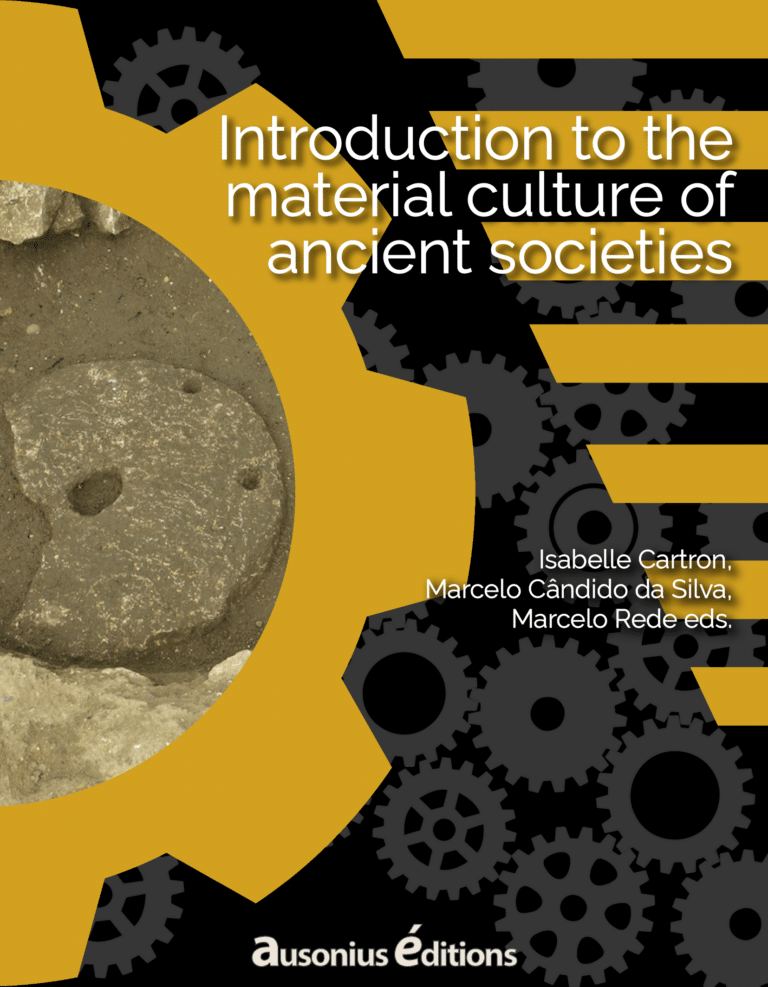We are used to see chronic food shortages as a characteristic feature of ancient societies. Some of the assumptions provided to explain the low agricultural productivity and constant episodes of famine that marked Europe until the eighteenth century are the technical meaning of poverty, the lack of workforce and its inefficient use, the absence of technological innovation and effective managements techniques. Western societies would have been able to overcome the problem of access to food – especially after the Industrial Revolution – even though food crises would have been led to war episodes and economic blockade while facing all those limitations. Far from this mechanical opposition between ancient scarcity and modern abundance, societies prior the Industrial Revolution’s needs to be highlighted. For example, the agricultural production surpluses, the adoption of rational management techniques of movable and immovable goods, along with luxury consumption by elite groups of people. Especially since the notion of “growth” or “food crises” does not allow us to ignore social and economic hierarchies. Food crises or scarcity does not affect all members of a community with the same intensity. Except for “closed” famine episodes (e.g. during sieges), conflicts or large-scale natural disasters, the access to food is, most importantly, a matter of different social hierarchies.
Until the end of the 20th century, the prevailing view among specialists was about the famines being caused by the ancient societies’ limitations of both human and technical resources when it comes to climatic phenomenon. Indeed, famine often appears in ancient sources along with climate events, harsh winters, floods, droughts, etc. Nevertheless, food scarcity is far from being a vestige of ancient societies, and remains a terrible contemporary phenomenon. There are people who see famine not as antithesis of modernity but as a symptom in the contemporary world. This incidentally seems to reinforce the data on the number of victims from hunger: Stephen Devereux estimated that more than 75 million people starved to death between 1903 and 1998, compared to 2 million deaths in the 17th century, 10 million in the 18th century and 25 million in the 19th century.1 They also show that food crises are also not caused by technical deficiencies. After the “Trente Glorieuses” movement of euphoria and the belief in technological and scientific revolution’s benefits in the 20th century final quarter, explanatory famine templates have changed substantively. In the early 80’ies, Indian economist Amartya Sen argued that famines should not be understood as a result of Food Availability Decline (FAD), but as a consequence of the reduction of people able to obtain food through legal means: such as home-made production, access to market opportunities, entitlements provided by the State, among others. Perhaps the greatest contribution of the so-called “entitlements’ theory” was shifting the axis of famine’s analysis from supplying issues – exemplified by the old Malthusian adage of too many people for too little food – to the inability of people and groups to have adequate access to food, regardless of rather food is available or not. Consequently, famines can happen even though there are enough food supplies within a successful market. The most recent literature has here main criticisms of entitlement’s theory. Firstly, it underestimates the impact on famine origins’ climatic factors. Its critics argue that the decline in direct entitlements is due to failures caused by draughts, which can result in famines as much as in decreases of exchange entitlements (adverse changes in the exchange values of food, falling wages, rising prices, etc.).
Sen’s analyses seem to underestimate the extend of the unavailability of food supplies while facing the intensifying effects of climate change on worldwide agricultural production. The second criticism of the entitlement’s theory is that is has not sufficiently considered how the social relations – in which entitlements are integrated – are produced, or how they are maintained by the force of the law, even in famine situations. The third criticism of Sen’s theory consists on consider the violation of entitlements from the explicit illegal actions’ perception only – such as looting and depredations.2 However, there is another phenomenon that interfere with the entitlements that cannot always be restricted to the illegality field. This is the case of political processes that involves the deliberate restriction of access to food, provoking or exacerbating food crises. This is the case of seigneurial coercion in Western Europe’s rural societies during the Middle Ages.
Sen’s perspective of famine as “failure of entitlements” also excludes political processes as a possible immediate cause, and place the fact that famines can also produce beneficiaries just as it can produce victims in the background. Those beneficiaries can play an active role in perpetuation or prolonging the conditions of famine once in a position of power.
The new understanding of inequality and famine have been reinforced by the economic and financial crisis, the COVID-19 pandemic, such as the Ukraine war and other events in the last few years. Way back in 2019, the FAO Report indicated a paradox: while the technology has evolved at an astounding pace, the economy was becoming increasingly interconnected and globalized but its growth is not as great as it was expected. This is partly duo to the lobal crisis that started at the end of the century’s first decade and that still negatively impacting the growth rates of middle-income countries while depending on commodity exports. At the same time, conflict and instability have grown at a rapid pace, leading to large population movements. Climate change and increased temperature variations have affected agricultural productivity, food production and natural resources – specially in low-income countries –, including a decline in the number of farmers. In addition to the pessimistic observation regarding the planet’s food situation (the goal of eradicating malnutrition by 2030, set by FAO in 2015, no longer seems achievable), the 2019 report related food insecurity and hunger not only to economic crises but also to conflicts, civil wars, refugee’s problem, and climate change. This proves that the role of environmental science findings (social experiences not yet translated into an environmental culture) in defining hunger not only in modern famines as recent work showed on the subject.
FAO’s 2019 report also evaluates by using a hunger indicator for the first time: the prevalence of moderate or severe food insecurity base on the Food Insecurity Experience Scale (FIES). The FIES is a brand-new tool, based on face-to-face interviews, to evaluate people’s ability to access food. The availability of data on actions to fight hunger – including the perception of users and their social networks – is an essential element in the development of efficient public policies that can effectively promote food security.
The questioning on food insecurity in recent years has moved towards an opinion that suggests it as a connected phenomenon, related to economic and public health crises, military conflicts, population displacements and climate change no longer restricted to a single region or merely to the poorest countries within a global dimension. Moreover, the crisis of overconfidence in technology and its ability to solve the hunger problem has not only reintroduced pollical and environmental issues to the famine agenda, it also questioned the old distinction between famines of the past and famines of the present. Pre-modern food crises are no longer considered to be the result of a societies’ confrontation that lacked resiliency dealing with natural imperatives and against modern crisis that were caused by human actions. Famine and food insecurity topic must include tackling four important points: Firstly, the reintegration of the socio-political processes and its understanding – such as local, regional, and international conflicts, refugee’s problem, and inequalities –. Then, the climate change incorporation in the explanatory templates of food crisis. The third aspect consists on considering the need to comparatively re-evaluate past and present food crises: if the environmental imperatives are, once again taken into consideration, so it is important to re-evaluate the experience of former societies in coping with food crises. Finally, the necessity of integrating the social perception of hunger and food insecurity in the theoretical modelling of the problem.
Read more
Propostas de Combate à Fome e à Insegurança Alimentar – Relatório Final
The State of Food Security and Nutrition in the World 2024
References
- Devereux, S., 1998: The New Famines: why famines exist in an era of globalization, London.
- Edkins, J., 2000: Whose Hunger? Concepts of Famine, Practices of Aid, Minneapolis. Sen, A., 1981: Poverty and Famines: An Essay on Entitlement and Deprivation, Oxford.



